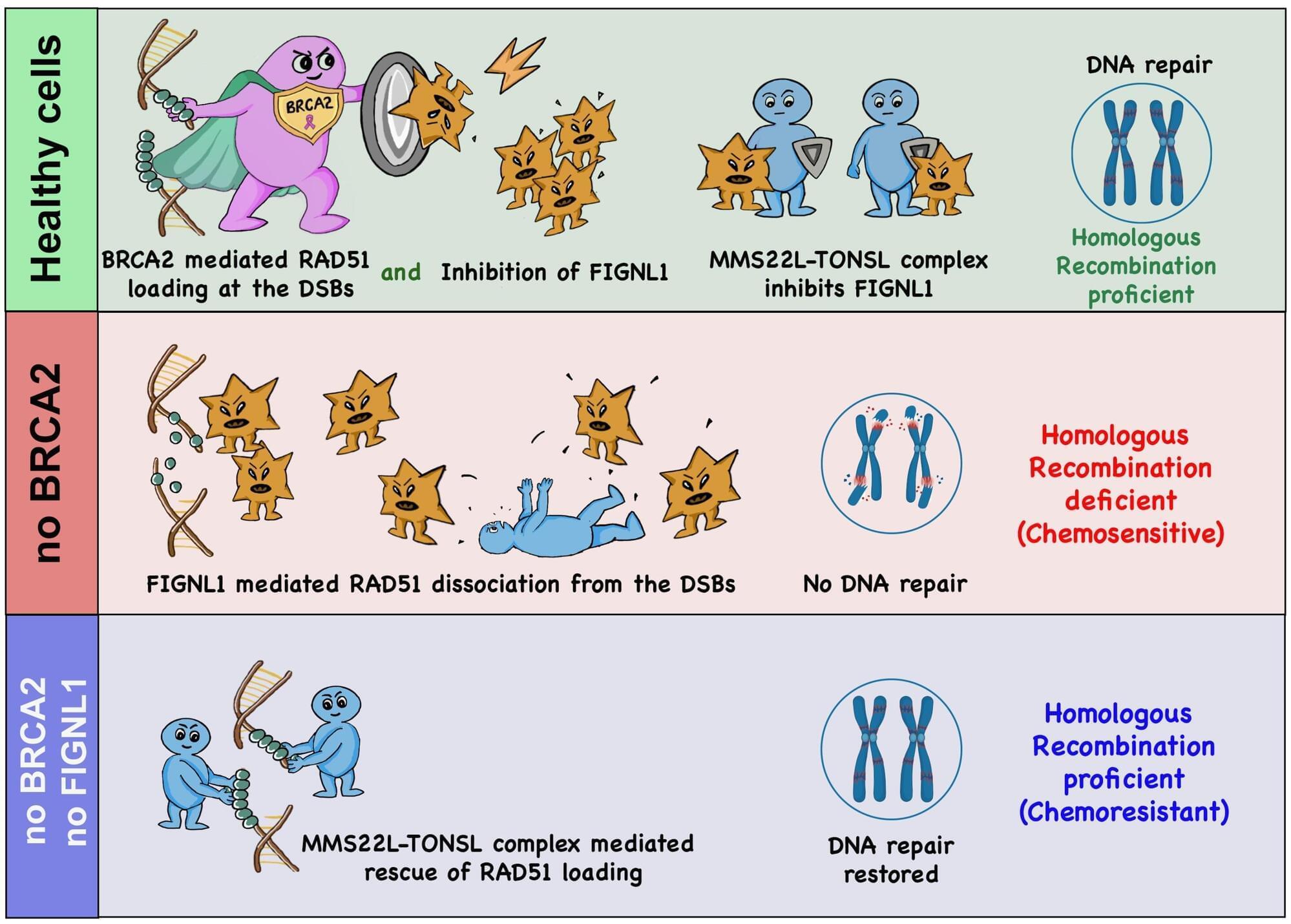
Get the latest international news and world events from around the world.


Skin-to-skin ‘kangaroo care’ found to boost neurodevelopment in preemies
Babies born very early had stronger neurodevelopmental performance at 1 year if they received more skin-to-skin care as newborns, a Stanford Medicine study found.

Generative AI develops potential new drugs for antibiotic-resistant bacteria
By Rachel Tompa
Stanford Medicine researchers devise a new artificial intelligence model, SyntheMol, which creates recipes for chemists to synthesize the drugs in the lab.

BRCA2 research reveals a novel mechanism behind chemoresistance
One of the biggest challenges in cancer treatment is chemoresistance: Tumors that initially respond well to chemotherapy become resistant over time. When that happens, treatment options are often limited.
A research team led by Arnab Ray Chaudhuri at the Department of Molecular Genetics, Erasmus MC Cancer Institute has now uncovered a mechanism by which BRCA2-deficient tumors develop this resistance. The proteins BRCA2 and FIGNL1 appear to have a different function than previously assumed.
“These findings change the paradigm of thought,” says Ray Chaudhuri. The team also identified ways to reverse or prevent resistance.
Exploring 3D Gaussian Splats In Virtual Reality
Learn more about Synthetic Gaussian Splatting and get Olli Huttunen’s Blender tool.

Introducing Aardvark: OpenAI’s agentic security researcher
Aardvark represents a breakthrough in AI and security research: an autonomous agent that can help developers and security teams discover and fix security vulnerabilities at scale. Aardvark is now available in private beta to validate and refine its capabilities in the field.
Aardvark continuously analyzes source code repositories to identify vulnerabilities, assess exploitability, prioritize severity, and propose targeted patches.
Aardvark works by monitoring commits and changes to codebases, identifying vulnerabilities, how they might be exploited, and proposing fixes. Aardvark does not rely on traditional program analysis techniques like fuzzing or software composition analysis. Instead, it uses LLM-powered reasoning and tool-use to understand code behavior and identify vulnerabilities. Aardvark looks for bugs as a human security researcher might: by reading code, analyzing it, writing and running tests, using tools, and more.
THE FOREST KING | Red Iron Road | Full Episode
Set in a suffocating, over-commercialized future, a young boy’s desire for success and status leads him into a terrifying and deadly new reality through the lens of a mysterious VR game.
His desperate father must now race against both time and technology to save his dying son.
But the boy is the only one who can save himself — before becoming another faceless pawn of the Forest King.
Adapted from the poem “The Forest Tsar” (1818) by Vasiliy Zhukovsky.
🎬 THE FOREST KING
The second installment of the animated horror anthology RED IRON ROAD.
Each episode is a standalone short film (10–20 minutes) inspired by European literature, produced with unique creative partners in distinctive visual styles.
🏆 Festival Highlights.
• World Premiere – Nightmares Film Festival (Ohio, USA, 2022)
• Nominations – FilmQuest, Blood in the Snow Film Festival, Animaze.
🌐 Official Sites:
https://www.lakesideanimation.com/for… 🎥 Credits Directed & Written By: Lubomir Arsov Produced By: Lakeside Animation Animation By: Art Light & Riki Group (Petersburg Animation Studio) Musical Score By: Lars Korb Starring: Carlo Rota, Tom Rooney, Jaiden Cannatelli 📖 Full Cast & Crew: https://www.imdb.com/title/tt23845934… 📺 Where to Watch Season 1 of Red Iron Road: Amazon Prime Video (subscription required): https://www.primevideo.com/detail/0PB… TubiTV (free streaming): https://tubitv.com/movies/100014990/r… Plex (free streaming): https://tubitv.com/movies/100014990/r… Hoopla Digital (free with library card): https://www.hoopladigital.com/televis… Kanopy (free via library or university): https://www.kanopy.com/en/product/140… Apple TV (subscription to Prime Video required): https://tv.apple.com 🔔 Subscribe for new animated horror shorts and exclusive content! Follow Red Iron Road & Lakeside Animation: Facebook: / redironroadseries Instagram:
/ redironroadseries TikTok:
/ lakesideanimation LinkedIn:
/ lakeside-animation 🔖 Hashtags: #RedIronRoad #AdultAnimation #Games #Anthology #Animation #AnimatedAnthology #HorrorAnimation #SlavicMythology #AnimatedShortFilm #LakesideAnimation #EuropeanHorror #AnimationStudio #FolkHorror #AnimatedHorror #CreepyTales #ClassicLiterature #AnimationForAdults © 2022 Ghost Train Productions Inc.

Mathematical proof debunks the idea that the universe is a computer simulation
From the article:
“We have demonstrated that it is impossible to describe all aspects of physical reality using a computational theory of quantum gravity,” says Dr. Faizal. “Therefore, no physically complete and consistent theory of everything can be derived from computation alone. Rather, it requires a non-algorithmic understanding, which is more fundamental than the computational laws of quantum gravity and therefore more fundamental than spacetime itself.”
It’s a plot device beloved by science fiction: our entire universe might be a simulation running on some advanced civilization’s supercomputer. But new research from UBC Okanagan has mathematically proven this isn’t just unlikely—it’s impossible.
Dr. Mir Faizal, Adjunct Professor with UBC Okanagan’s Irving K. Barber Faculty of Science, and his international colleagues, Drs. Lawrence M. Krauss, Arshid Shabir and Francesco Marino have shown that the fundamental nature of reality operates in a way that no computer could ever simulate.
Their findings, published in the Journal of Holography Applications in Physics, go beyond simply suggesting that we’re not living in a simulated world like The Matrix. They prove something far more profound: the universe is built on a type of understanding that exists beyond the reach of any algorithm.

Scientists reverse Alzheimer’s in mice with groundbreaking nanotech
Researchers used supramolecular nanoparticles to repair the brain’s vascular system and reverse Alzheimer’s in mice. Instead of carrying drugs, the nanoparticles themselves triggered natural clearance of amyloid-β proteins. This restored blood-brain barrier function and reversed memory loss. The results point to a revolutionary new path for treating neurodegenerative diseases.